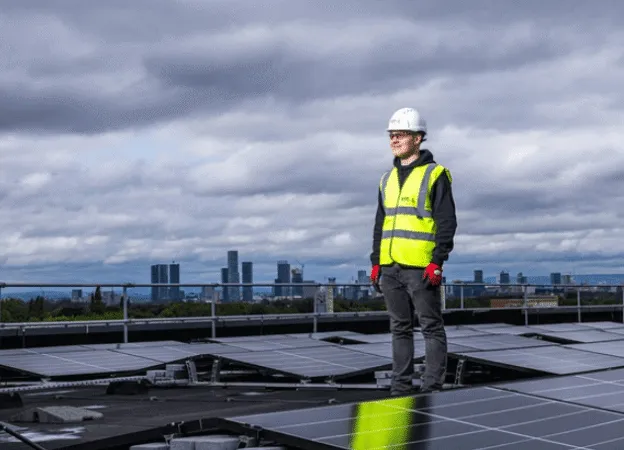Maintaining your business property is not just about keeping it looking good; it’s about optimizing its performance. Business property maintenance enhances efficiency, safety, and overall functionality, which can directly impact your bottom line.
Table of Contents
Here are some actionable strategies to optimize your business property maintenance for peak performance.

Prioritize Preventive Maintenance
Preventive maintenance is the key to avoiding costly repairs and unexpected downtime. Create a detailed schedule for regular inspections and maintenance tasks such as HVAC system servicing, roof inspections, and plumbing checks.
This also includes commercial pest control that utilizes integrated pest management (IPM) strategies to address issues in a proactive and environmentally responsible manner. By addressing minor issues before they escalate, you can prolong the lifespan of your property’s systems and equipment, saving both time and money in the long run.

- Regular inspections and maintenance tasks should encompass all aspects of your property, including structural components, mechanical systems, and safety features. This comprehensive approach ensures that potential issues are identified and addressed promptly, reducing the risk of major breakdowns or safety hazards.
- Create a maintenance checklist tailored to your property’s specific needs, considering factors such as climate, usage patterns, and equipment age. By customizing your preventive maintenance plan, you can focus on areas that are most prone to wear and tear, optimizing the efficiency of your maintenance efforts.
- Don’t overlook the importance of seasonal maintenance tasks, such as gutter cleaning, landscaping, and HVAC system tune-ups. These proactive measures help prepare your property for changing weather conditions and mitigate the risk of weather-related damage or disruptions to operations.
Invest in Energy-Efficient Solutions
Energy expenses can be a significant overhead cost for businesses. Opt for energy-efficient solutions such as LED lighting, smart thermostats, and insulated windows to reduce utility bills and minimize environmental impact.
Conduct energy audits to identify areas for improvement and invest in upgrades that offer the best return on investment. Not only will this optimize your property’s performance, but it will also demonstrate your commitment to sustainability.
- Beyond reducing energy consumption, energy-efficient upgrades can also improve occupant comfort and productivity. For example, installing programmable thermostats allows you to adjust temperature settings based on occupancy patterns, optimizing comfort while minimizing energy waste.
- Explore available incentives and rebates for energy-efficient upgrades offered by government agencies and utility providers. These financial incentives can significantly offset the initial investment cost, making energy efficiency upgrades a more attractive option for businesses.
Implement Technology for Streamlined Maintenance
Embrace technology to streamline your property maintenance processes. Utilize maintenance management software to track work orders, schedule tasks, and monitor equipment performance.
Internet of Things (IoT) devices such as sensors and smart meters can provide real-time data on energy usage and equipment health, enabling proactive maintenance interventions. By leveraging technology, you can optimize efficiency, reduce manual labor, and enhance overall performance.
- Maintenance management software offers features such as asset tracking, inventory management, and automated work order generation, streamlining the entire maintenance process from request submission to task completion. By centralizing maintenance operations in a digital platform, you can improve communication, accountability, and data-driven decision-making.
- IoT devices provide real-time insights into equipment performance and health, enabling predictive maintenance strategies that anticipate and prevent potential failures. By detecting early warning signs of equipment malfunction, you can schedule repairs or replacements proactively, minimizing downtime and costly disruptions to operations.
Foster a Culture of Safety and Cleanliness
A safe and clean work environment is essential for employee productivity and customer satisfaction. Implement safety protocols and provide training to ensure compliance with regulations and minimize the risk of accidents or injuries.
Regular cleaning and sanitation procedures not only maintain a positive image but also contribute to the health and well-being of occupants. Encourage employees to take ownership of their surroundings by promoting a culture of cleanliness and accountability.

- Regular safety training and drills are essential for reinforcing safety protocols and emergency procedures among employees. Provide ongoing education on topics such as proper lifting techniques, hazard recognition, and emergency evacuation plans to ensure that all staff members are equipped to respond effectively in case of an emergency.
- In addition to regular cleaning schedules, establish protocols for waste management, recycling, and hazardous materials disposal to maintain a clean and environmentally responsible workplace. Encourage employees to take an active role in sustainability efforts by providing resources and incentives for eco-friendly practices.
- Recognize and reward individuals or teams that demonstrate exemplary safety and cleanliness practices. Celebrating achievements and fostering a positive work environment can reinforce the importance of maintaining a safe, clean, and healthy workplace for everyone.
Final Words on Business Property Maintenance
Optimizing business property maintenance is more than just a checklist of tasks; it’s a strategic investment in your company’s success.
By prioritizing preventive maintenance, investing in energy-efficient solutions, embracing technology, and fostering a culture of safety and cleanliness, you can enhance the performance of your property and drive business growth. Remember, proactive maintenance today leads to peak performance tomorrow.



